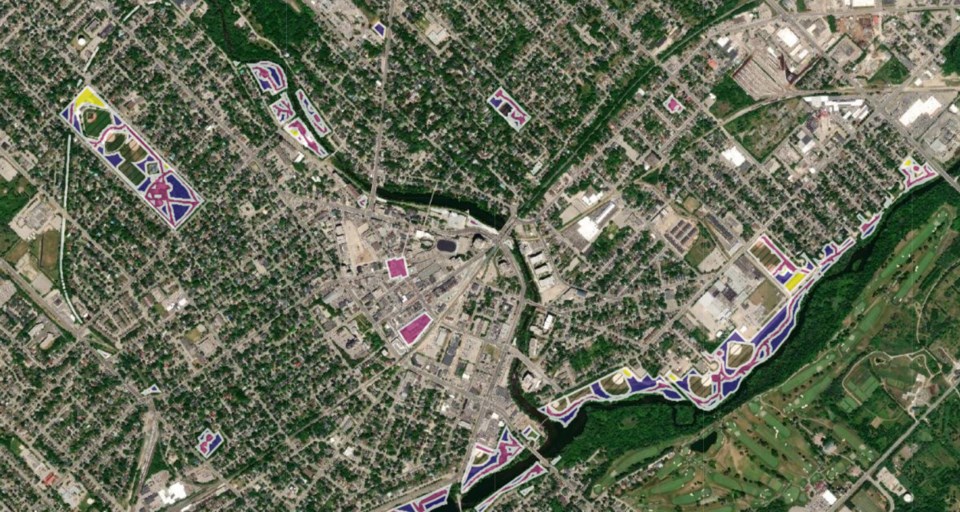New restrictions are now in play regarding where encampments can be set up on public lands and when, but don’t expect any structures to be taken down by the city for at least a few weeks.
City officials say the new public space use bylaw, which came into effect on Tuesday, will begin with information gathering, followed by the issuing of violation notices and then, if not brought into compliance, enforcement.
“This is about structures not individuals and we want to work compassionately with the individual to make sure that while we are seeking voluntary compliance, this is not about removing encampments,” explained deputy CAO Colleen Clack-Bush. “It's about having them be in the appropriate location.”
Approved by city council in August, the bylaw limits encampments in certain public areas, such as environmentally sensitive areas or spots with competing public use, and under specific conditions.
Among those conditions are:
- temporary structures must be a certain distance from railways and waterways to minimize risk for those living unsheltered, and be separated at specific distances from splashpads and schools;
- restricting the use and occupation of environmentally sensitive areas to protect natural habitats and drinking water safety;
- regulating how propane tanks are kept and stored in or around temporary structures on city property to prevent accidents, and;
- preventing misuse of municipal electricity, water, and other infrastructure for safety and service continuity.
St. George’s Square and Market Square in the downtown core are Included in the list of sensitive areas where encampments aren’t allowed.
Now that the new rules are in effect, city bylaw staff will be gathering information about encampments throughout the city and determining if there are violations, noted Doug Godfrey, the city’s general manager of operations.
That process could take about a week, he said.
Then bylaw enforcement staff will get together with social workers from agencies already serving unhoused Guelphites to approach anyone whose structure is in violation of the rules and discuss how to bring them into compliance.
“We would advise the individuals that they must comply with the bylaw, and we'll go from there,” said Godfrey. “We would give a period of time for that individual, whoever erected the structure, to comply and it would be probably one to two weeks.”
If there are still compliance issues at that point, the person could be issued a trespass notice for their structure and the structure would be taken down by city workers. Any personal items would be held onto for 30 days so the owner can claim them.
Once the structure has been removed, there’s no longer a compliance issue and the matter is over. There will be no fine issued and, for the most part, no court summons issued.
The latter may happen in cases of repeat offenders, Godfrey noted.
At council’s request, city staff created a map of the city that highlights areas encampments are allowed outright, prohibited and where they can if certain conditions are met.
“I would say that the map is there to be a helpful tool, but we fully recognize that it's not something that people are automatically going to have. We don't expect people necessarily to have the ability to look at a map,” said Clack-Bush. “That's what our staff are here to do to help support, as well as the social service agencies that we work with, like Stepping Stone. The map is just intended to visualize the sections within the bylaw.”
Part of the point of the map, she noted, is for the general public to have an idea of where encampments are allowed to be.
“We need to make sure they understand that there are lots of locations where encampments are actually legal,” said Clack-Bush. “There are many, many places in the city where it's going to be completely permissible for people to live in a temporary shelter.”
